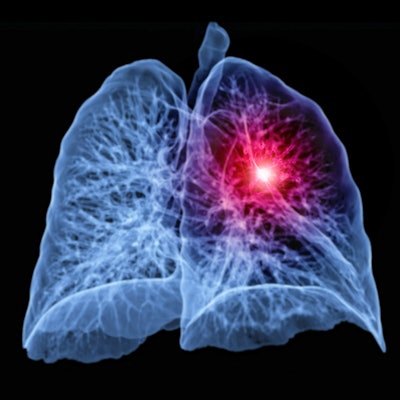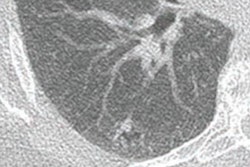
Patients who are referred for a diagnostic chest CT scan to follow up suspicious lesions found on CT lung cancer screening appear to be less likely to report for regular screening going forward, according to a study published November 6 in the Journal of the American College of Radiology.
Patients who were referred to diagnostic CT after a suspicious finding on a screening exam were half as likely to participate in screening afterward as individuals who never received diagnostic CT, according to Dr. Suzanne Byrne and Dr. Mark Hammer, both of Brigham and Women's Hospital in Boston.
"In the majority of cases ... diagnostic CT studies were ... ordered for follow-up of nodules, rather than for acute indications [making it] likely that the clinician intended to order lung cancer screening CT," Byrne and Hammer wrote.
Lung cancer screening with low-dose CT has been shown to be an effective way to reduce mortality from the disease, but uptake rates haven't been robust. Patients with a Lung-RADS scores of 1 to 4A can be tracked with lung cancer screening according to published guidance, rather than diagnostic chest CT.
And there's a cost to unnecessary diagnostic CT exams. They have a higher radiation dose than screening studies, can put a patient on a management protocol that is outside of lung cancer screening guidelines, and may contribute to losing patients from the screening program.
Byrne and Hammer sought to assess rates of diagnostic chest CT after lung cancer screening CT and to track any factors associated with a patient being referred to diagnostic chest CT. Their study included 5,912 patients who had regular CT lung cancer screening between June 2011 and August 2018. Of the total patient cohort, 2,756 underwent subsequent diagnostic or lung cancer screening chest CT. The most common reason for diagnostic CT was higher Lung-RADS score, but age and the presence of chronic obstructive pulmonary disease were also factors.
The study found that the majority of patients (82%) who had subsequent CT lung cancer screening exams after the initial exam remained in the screening program, but only 39% of patients who underwent diagnostic CT after screening did.
"A higher Lung-RADS score is a risk factor for subsequent diagnostic chest CT, and this is an independent risk factor for loss from the lung cancer screening program," Byrne and Hammer wrote.
Why is the phenomenon occurring? It could be that once diagnostic CT is ordered, patients are referred to specialists and their follow-up is then managed outside the screening program, Byrne and Hammer suggested. Other reasons could be that patients who have undergone diagnostic CT are not necessarily assigned a Lung-RADS category -- which knocks them out of the lung cancer screening protocol -- or that some patients eventually develop comorbidities or malignancies that remove them from the screening program.
How can this problem be addressed? Further education of referring physicians that not all orders for diagnostic CT scans are necessary, according to the authors.
"[Our] data suggest that these diagnostic CT studies were ordered inadvertently but still had a deleterious effect on patient retention within the screening program," they wrote. "Thus, there is an opportunity to intervene and reduce this loss from the lung cancer screening program by reducing the number of diagnostic CT studies and redirecting patients and providers when such CT is ordered."





















